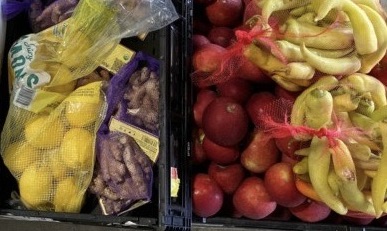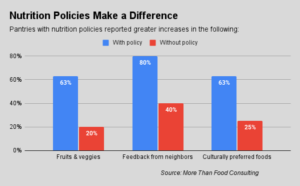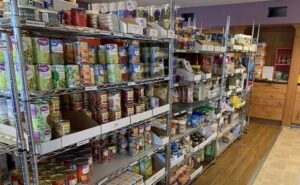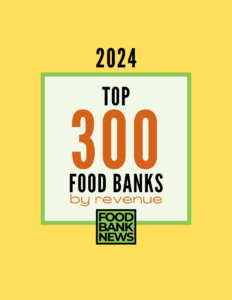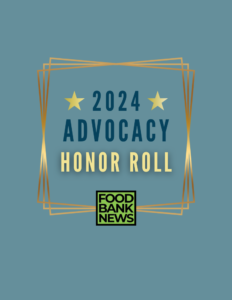The Food Bank of Central and Eastern North Carolina has more experience than most food banks when it comes to Food is Medicine. For a few years now, it has been working with state health care providers to serve patients in need of healthy food. Currently, it’s delivering food and/or produce prescriptions to about 500 patients.
The food bank also has a vision for what the future may look like. Under its three-year plan, it expects to be earning $2 million a month by serving 14,000 patients.
That revenue would come through North Carolina’s Medicaid 1115 waiver, which allows health insurers to reimburse organizations when they provide non-medical interventions, such as food or housing, to improve patient health. Such waivers recognize that 80% to 90% of a person’s health is determined by how and where they live, rather than the medical care they receive.

The waivers offer ample opportunity for food banks and other community organizations to cover the cost of activities they traditionally have done for free, said Gideon Adams, Vice President of Community Health and Engagement at Food Bank of Central and Eastern North Carolina. He noted that $2 million a month “is a heck of a lot more than we get now for giving out food, right?”
Currently, state healthcare managers pay the food bank $150 for each large box of shelf-stable food it delivers and $90 for each small box. That amount covers the cost of using DoorDash to make the deliveries, as well as a handling fee to various partner agencies that hold onto the boxes until they can be delivered. “Part of our model is to get as much of the federal dollars out into the community as we can,” Adams noted.
The margins that are available through the box delivery program help to make up for the cost of the produce prescription program, which the food bank views as a loss leader. Under that program, the food bank receives a $210 reimbursement to cover the cost of fresh produce delivered twice a month to a patient’s door. The food bank contracts with a local food hub to fill those prescriptions and make those deliveries. It receives a $5 administrative fee for each referral “so there’s no margin,” Adams said.
About 65% of the Food is Medicine work the food bank is doing is the large box deliveries, Adams said. Produce prescriptions make up another 19%. The remainder is small-box deliveries and case management type work. The waivers also allow for medically tailored meals, but the food bank has not yet initiated that service. “I’m not sure that we’ll get directly into medically tailored meals because it’s very, very niche,” Adams noted.
The food bank currently has 2.5 full-time equivalent employees devoted to its Food is Medicine work, including a dedicated billing agent. Adams acknowledged that billing is “cumbersome.” He noted that the Unite Us system being used for referrals has morphed into the billing system as well, so “it’s quite labor-intensive to use.” The food bank expects to add more employees as its Food is Medicine program expands geographically, and is hoping that the billing aspect becomes more efficient over time.
But whatever hassles there may be in getting a Food is Medicine program up and running are worth it, Adams says, given the upside of being able to lean on government insurance funding to address food insecurity. “We’re talking about a potential funding stream that’s the size of the defense budget,” he said. “It’s huge, with a huge need.”
That level of funding would drive the systemic change that food banks have long been asking for, he noted. “Here’s a method for the government to actually step up to the plate,” he said.
The government’s involvement is attracting other providers of Food is Medicine, including private companies that provide meals and/or food boxes. But Adams is not worried about the so-called competition. “I believe there is space for everyone because nobody’s going to be able to do this work on their own,” he said. The 14,000 patients that the food bank expects to be serving in three years, for example, would only amount to 3% of the total market in its service area. “So there’s a whole 97% out there that needs to be done by somebody else.”
Adams advised food banks to get into Food is Medicine, despite its potential complexities. “It’s going to be difficult, but I would argue that everything we do is difficult. If someone had said 40 years ago that you’re going to be giving out millions of pounds of food and get paid nothing for it – that’s difficult.” He added, “Jump on this opportunity for change that we’ve been asking for. Don’t hesitate.” – Chris Costanzo
Like what you’re reading?
Support Food Bank News
